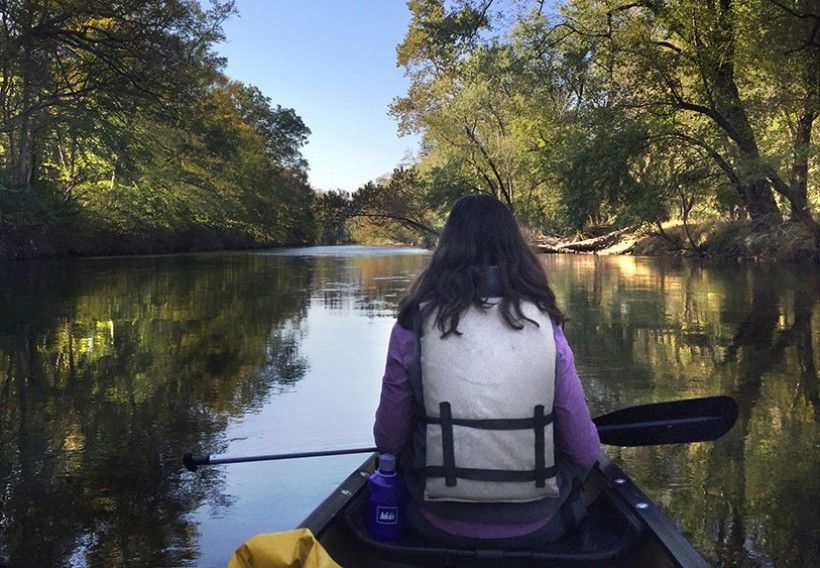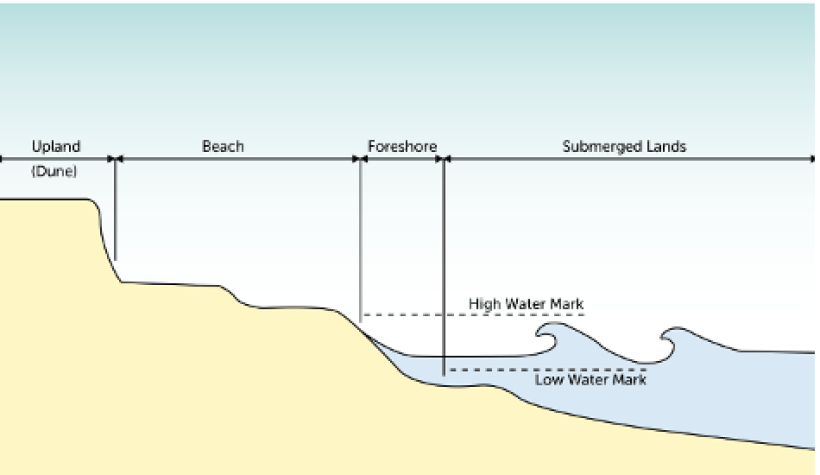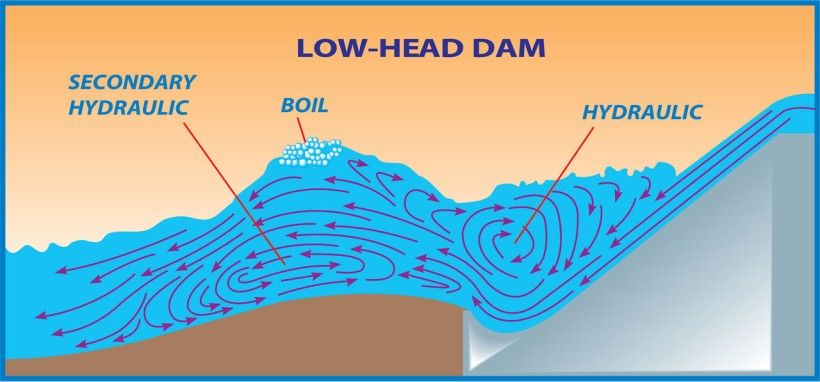
Paddling on the Brandywine
A trip paddling or floating down the Brandywine can be a wonderful experience as you enjoy the solitude, sights and sounds that nature provides. However, your enjoyment is further enhanced if you are well-prepared and understand some best practices while on the river.
Private property
Much of the riverside property is under private ownership (shown in purple on the map above). You should only exit the water at designated public access sites along the river, also marked on the map. Please respect the privacy and property of adjacent landowners during your trip. In the Commonwealth of Pennsylvania and the State of Delaware, only those areas submerged at the low water mark are considered public. The foreshore (the area between high and low water mark), beach, and upland areas are considered private property.

Personal Safety
Your safety, as well as those in your group, is the most important consideration when accessing the river. In Pennsylvania and Delaware, it is required by law that everybody over the age of 12 have access to a life jacket while in a canoe or kayak. Children 12 years of age and younger on Pennsylvania and Delaware waters in all canoes, kayaks, paddleboards and boats 20 feet or less in length must always wear a life jacket. In Pennsylvania, between November 1 through April 30, life jackets must be worn by each person onboard a canoe, kayak, paddleboards and all boats less than 16 feet in length.
Travel Time
Be sure you can complete your planned trip before it starts to get dark. Be prepared with the time of sunset on the day of your trip.
Float times vary considerably based upon river flow, your equipment (canoes and kayaks travel faster than tubes), and experience. For example, at a gage height of around 2.5 ft. in Chadds Ford, the trip between our campus and Brandywine Creek State Park (Thompson’s Bridge) takes approximately 2–2.5 hours in a canoe or kayak. The same trip in a tube could take upwards of 4 hours, or even longer at very low flow conditions.
Please note that both First State National Historical Park and Brandywine Creek State Park close at sunset. Arriving at these locations after sunset may result in you finding any vehicle left there either towed or trapped behind a locked gate.
Weather
Know and understand the weather forecast for the full duration of your trip. Be prepared with sunscreen and water for sunny conditions, and never plan a trip when thunderstorms are imminent or possible. Also, it is extremely dangerous to travel the river in a storm event or soon after one. High flows are not only swift, unpredictable, and difficult to navigate, but they can carry pollutants from adjacent land, increasing the risk of harmful bacteria being present and ingested. The possibility of other pollutants such as heavy metals, fertilizers, chemicals being present is also greatly increased.
Pack Smart
Depending upon the length of your trip, you may want to consider bringing some snacks, and especially water during the summer months. A dry bag or box is helpful to store these items, as well as a change of clothes and your phone or any other electronics you may have with you. Also, don’t forget your car keys and be sure to also store them in a safe location during your float.
Boating Under the Influence
It is illegal to operate a watercraft (including canoes and kayaks) in Pennsylvania and Delaware while under the influence of alcohol or a controlled substance. Boating under the influence is taken seriously and is punishable with fines or jail time for prosecuted offenders.
Within First State National Historical Park, alcohol consumption is prohibited. Violation of this order may result in felony charges. Alcohol is also prohibited in Brandywine Creek State Park.
Dams and Strainers
Dams
During your trip on the Brandywine, you may encounter dams and what are known as strainers. Each should be approached with caution. If you know a dam is on your planned route, be sure to understand the correct route and means of portaging around the dam. It is not advisable to run over a dam as you can become trapped in the turbulent hydraulic flow created at its base and be unable to surface. It is also not safe to run any breach in a dam as the flows can be unpredictable and far exceed those on the river.

Strainers
A strainer is an obstruction, such as downed trees, that allow water to pass through but can hold and trap watercraft and boaters. You may become pinned against the obstruction or trapped under water, so keep a safe distance from these obstructions.
Know Where You Are
Be sure to understand your planned trip and be aware of key navigational clues (such as road crossings/bridges, major tributaries, publicly recognizable places), as you flow downstream to best understand where you are. In the event of an emergency (see below), this will assist in emergency services understanding where you are. Please note that cell coverage is unreliable along some sections of the river, so don’t rely on digital maps as your sole source of information. It is also a good idea to let somebody who is not in your party know of your plans.
In an Emergency
If emergency assistance is required, call 911. Provide as much locational information as you can to assist emergency services. While traveling down the river, it is helpful to keep visual clues as to your location, such as road crossings, notable landmarks (buildings, bridges, etc.) to help provide emergency services with a known location. Being able to provide where you accessed the river and where you intend to exist may also be helpful when paired with the amount of time you’ve been on the water.
Leave No Trace
Be sure to pack out everything you arrive with and take only pictures. Please be advised that littering, open fires, alcoholic beverages, and illegal drugs are prohibited and enforced by local authorities. In addition, be sure to follow the seven principles of leave-no-trace.

River Access at the Brandywine Museum of Art
Please note that on weekends and Holidays (Memorial Day, July 4, & Labor Day) between 5/24/25 to 9/1/25, the Brandywine Conservancy & Museum of Art charges a $20 fee to park for river access.
You should also be aware of other parking restrictions at other access locations or at nearby commercial areas.
- Shaw’s Bridge Park in East Bradford (upstream from the Brandywine Museum of Art) has limited parking and is popular at all times of the year.
- In First State National Historical Park, long-term parking is prohibited at Smith’s Bridge or along any park road. This location should only be used for dropping off or collecting equipment. Parking in prohibited areas of the National Park may result in your vehicle being towed. During the busy season, additional parking is provided in a field at the corner of Ramsey Road and Brandywine Creek Rd.
- Parking at Thompson’s Bridge in Brandywine Creek State Park requires a fee (DE registered vehicle: $4/day, Non-DE registered vehicle: $8/day) and the parking area closes at sunset.
- Parking in nearby commercial areas, neighborhoods or along public or private roads near any access location risks your vehicle being towed.
Helpful Links
Pennsylvania Fish and Boat – The State agency responsible for the protection, conservation and enhancement of the Commonwealth’s aquatic resources, including the regulation of fishing and boating. Information on boating can be found here.
Delaware Department of Natural Resources and Environmental Control (DNREC) – The Office of Boating Safety and Education’s mission is to develop individual awareness, skills, commitment to safe responsible behavior, and constructive actions in safe boating. Additional information can be found here.
Navigating Waterway Access – A comprehensive guide to the laws of water access in the Delaware River Basin.
Northbrook Canoe Company – Northbrook Canoe offers four trip length excursions, all ending at their location in Northbrook, PA. Operates from May 1st to early October. If new to recreating on the Brandywine, this is a way to become more comfortable on the water.